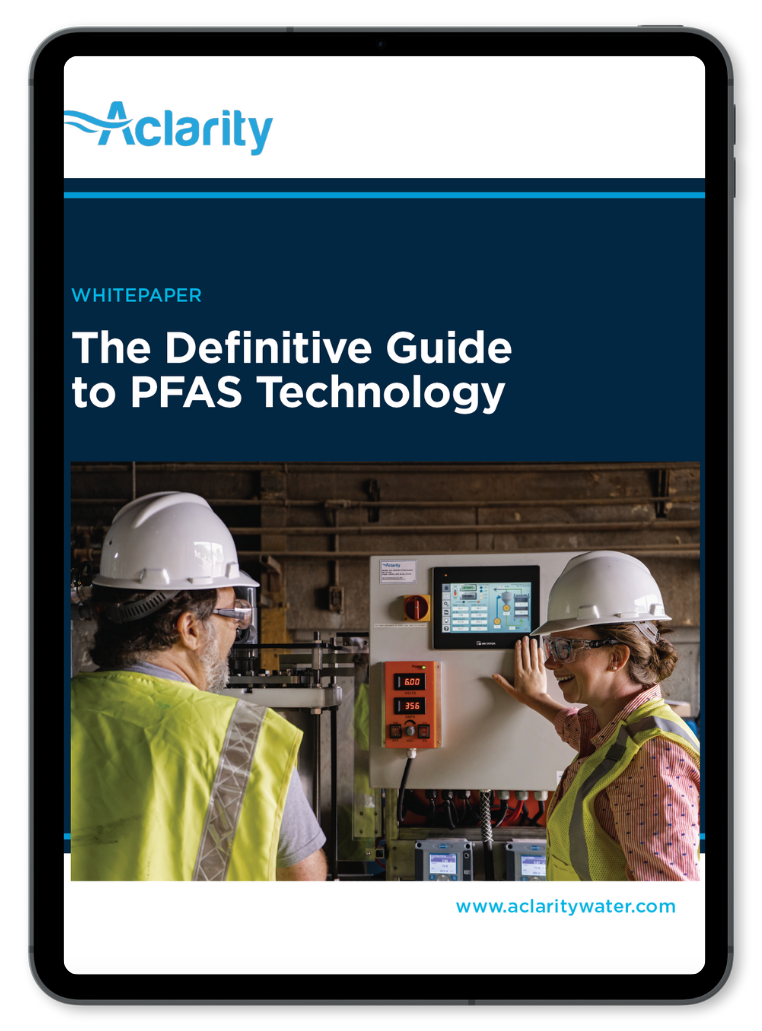A Guide to PFAS Remediation
January 18, 2024 | 8 minute read

What is PFAS remediation?
Remediation generally refers to the process of correcting or mitigating a problem or undesirable situation. It is the act of taking actions or implementing measures to address and resolve issues, improve conditions, or restore something to its desired state. Environmental remediation refers to cleaning up pollution or contaminated sites, and it involves the systematic effort to remedy or rectify problems and return a system, environment, or situation to a satisfactory or acceptable state.
Taking this into account, successful PFAS ‘forever chemicals’ remediation is extremely difficult, yet hugely important. PFAS compounds degrade very slowly, if at all. Most of these compounds have long carbon chains with more than one fluoro-carbon bond present in their structure, this makes them very stable, bio-accumulative and often harmful to living organisms.
There are various methods and techniques that are being employed for PFAS remediation (e.g.: separation and incineration). In addition, there are newer technologies targeting not only remediation but PFAS destruction.
Why is it so hard to remove PFAS?
There has been extensive research quantifying the strength of the carbon-fluorine bond and the difficulties to dissociate it. Chan et al. 2011, reports: ‘Fluorine forms the strongest single bond to carbon with a dissociation energy of up to 130 kcal/mol, the highest among all natural products. This unrivalled stability arises because fluorine is the most electronegative element, which introduces reinforcing ionic forces through strong polarization of this bond.’ Therefore, the fluoro–carbon bond gives PFAS extreme resistance to biological degradation and makes biological treatment of PFAS, and its bioremediation, a burdensome task. Additionally, only a handful of fluorinated compounds occur naturally in nature. This means bacteria have not had long (60 – 70 years) to adapt, and develop pathways and enzymes to degrade these compounds. As a result PFAS compounds do not undergo natural decay in the environment or in our bodies.
The energy of the fluoro-carbon bound is actually so high that even thermal treatment requires extremely high temperatures. Even temperatures above 1,800°F do not guarantee a safe remediation of PFAS compounds as some of them might still escape, enter the atmosphere, and then re-enter the environment.

The Definitive Guide to PFAS Technology Whitepaper
Comprehensive guide to understanding PFAS management strategies to reduce risk and safeguard environmental and public health.
Stay current on advantages and disadvantages of technologies available for PFAS:
- Removal
- Disposal
- Destruction
What are the current PFAS remediation options available?
Despite many scientific approaches to resolving the PFAS remediation problem being worked on at universities and at the lab scale, there are actually not that many PFAS remediation methods currently available that can be used in the field. The most well known are:
- granular activated carbon (GAC)
- foam fractionation
- incineration
- solidification
- deep well injection
- low energy electrochemical oxidation (EOx)
- supercritical water oxidation (SCWO)
- hydrothermal alkaline treatment (HALT)
For an overview of pros and cons from the options above, review A guide to Treating PFAS in Landfill Leachate. While geared towards the waste industry, the information provided will share insights useful for any industry looking to address PFAS.
What are some of the challenges with PFAS remediation?
Some merely remove the PFAS but do not destroy it. GAC, foam fractionation, incineration, solidification or deep well injection still leave the ‘treated’ PFAS compounds to be managed after they are moved from the initial waste stream. Although the PFAS is captured and contained through these methods, the PFAS is still a hazard. What is worse, stored PFAS is often concentrated, creating additional risk for people working with it, as well as having greater potential of leaking back to the environment during storage.
What is the best approach to PFAS remediation?
Many are looking at low energy electrochemical oxidation (EOx) for destruction of PFAS in landfill leachate, industrial waste water and many other highly concentrated streams. The process involves the passage of an electrical current through a liquid solution to mineralize PFAS compounds on the anode surface. Companies like Aclarity have made significant advancements in EOx technology, successfully implementing low energy systems in the field and reducing energy consumption to below 10 kWh/m3 for 99% destruction in certain cases. This method proves effective in treating C4-C9 PFAS compounds in full-scale volumes, reducing concentrations to below detection levels for both raw leachate and concentrates from various processes like foam fractionation, reverse osmosis, and evaporator processes. Notably, the EOx process operates at ambient settings, eliminating the necessity for high pressures, high temperatures, or harsh caustic amendments. This practical and feasible approach offers a reliable method for completely eliminating PFAS in landfill leachate.
How does it differ from other PFAS remediation options?
This is a safe and simple, low energy process to destroy PFAS. It does not require harsh caustic amendments and high salinity does not pose any problems in PFAS treatment by EOx (unlike most of the absorption or precipitation-based methods). Aclarity’s EOx has low operating energy costs and does not require high temperatures or pressures to operate. Low energy EOx offers on-site PFAS destruction with minimal involvement of operating staff. It is a plug and play system, and can attach right into existing leachate or wastewater tanks with no interruption of site operations or site personnel required after initial installation.
DOWNLOAD NOW: The Definitive Guide to PFAS Technology Whitepaper
Summary and Conclusion
At first glance there seems to be quite few viable options for PFAS remediation, however on closer examination many of the methods promoted for PFAS remediation have limitations. Understanding national and local regulations as well as costs is a great first step in approaching PFAS remediation. Managing PFAS has become increasingly challenging due to heightened regulatory scrutiny, disposal expenses, and compliance pressures from local and federal governments. The industry has swiftly responded by implementing PFAS separation, concentration, and destruction demonstration projects to effectively PFAS.
Full-scale adoption of various technologies is underway, with organizations opting for site-specific treatment processes based on factors like daily volumes, influent and target effluent PFAS compound concentrations, water characteristics, and regional requirements. While some solutions are more mature, on-site PFAS destruction has emerged as a cost-effective and readily available option for PFAS management. The utilization of PFAS destruction not only presents opportunities for creating new revenue streams but also mitigates chain of custody risks associated with PFAS waste transportation.
Looking to learn more? Get a free evaluation from Aclarity. As with all water treatment, due to the varying nature of leachate and other wastewater streams, results may vary. Aclarity does not advise on PFAS destruction potential until a water analysis is provided and lab scale testing has been completed. Get started today!
Recommended resources:

WHITEPAPER
Download The Definitive Guide to PFAS Technology whitepaper and delve into current PFAS removal technologies. In this whitepaper, analyze the pros and cons of a variety of PFAS technologies and discover practical exercises for organizations to identify and implement suitable solutions. In this comprehensive document, walk away with an understanding of PFAS management, facilitating informed decision-making to reduce PFAS risk and protect environmental and public health.
